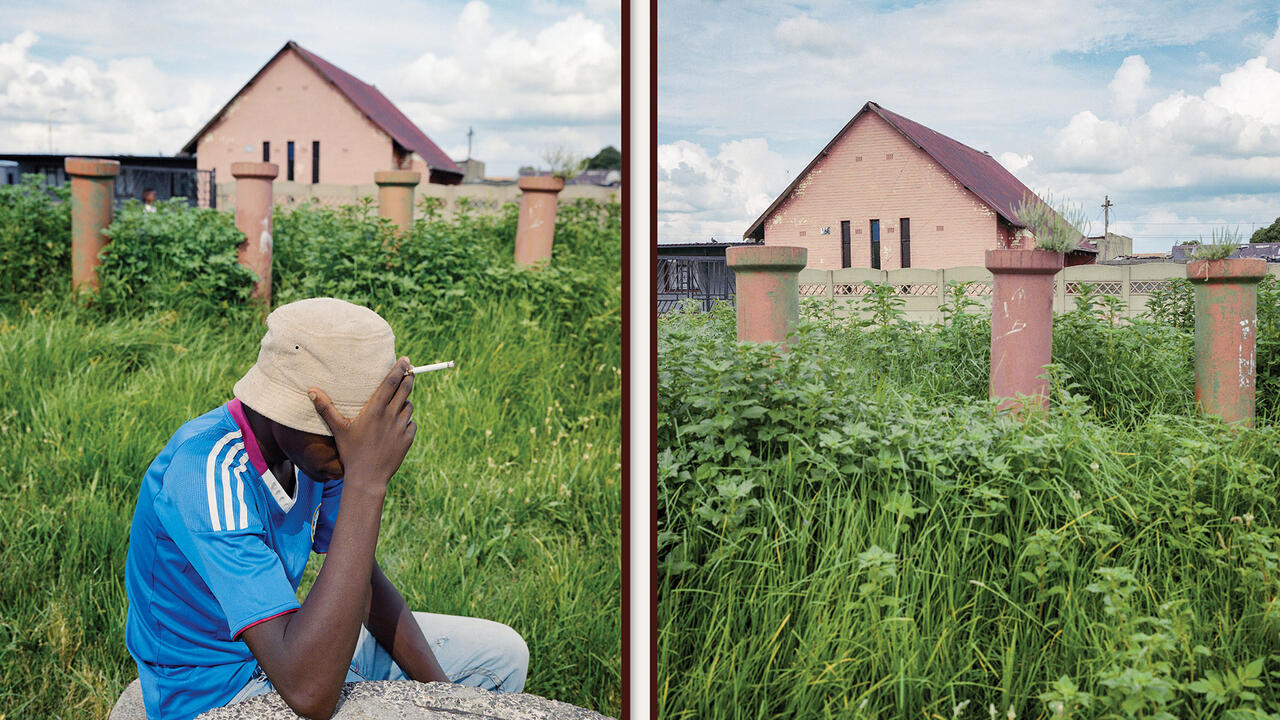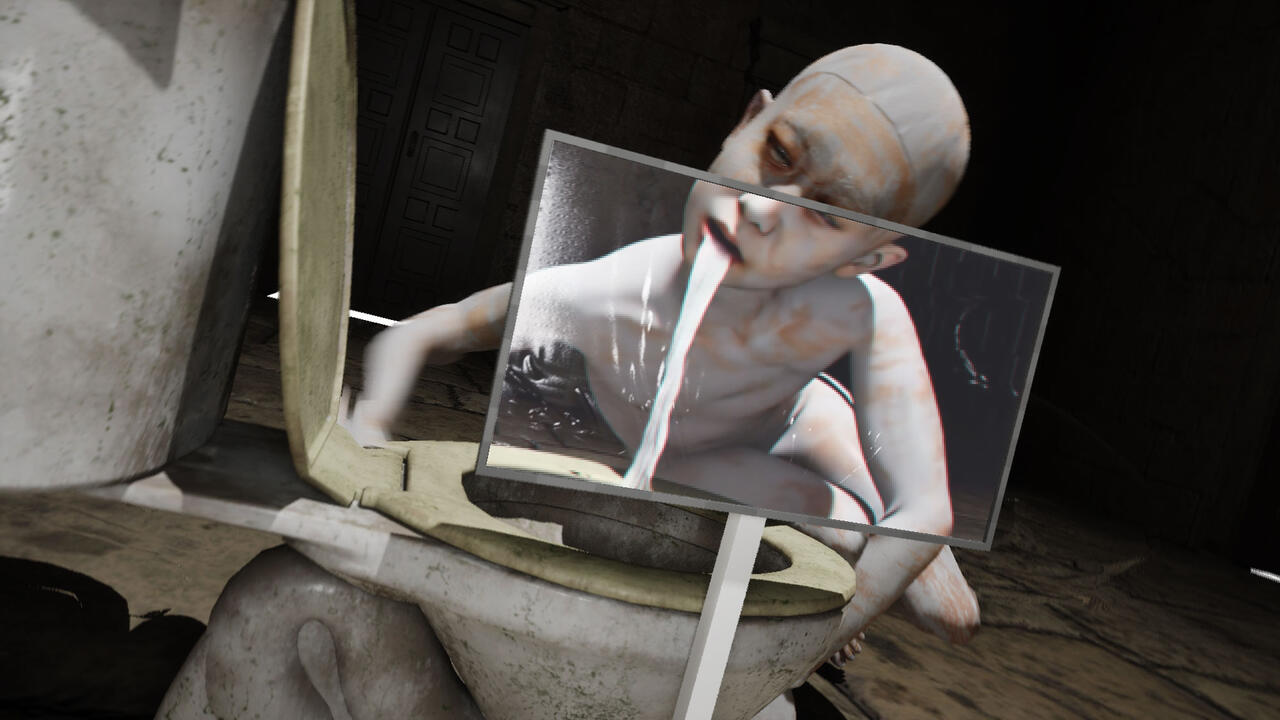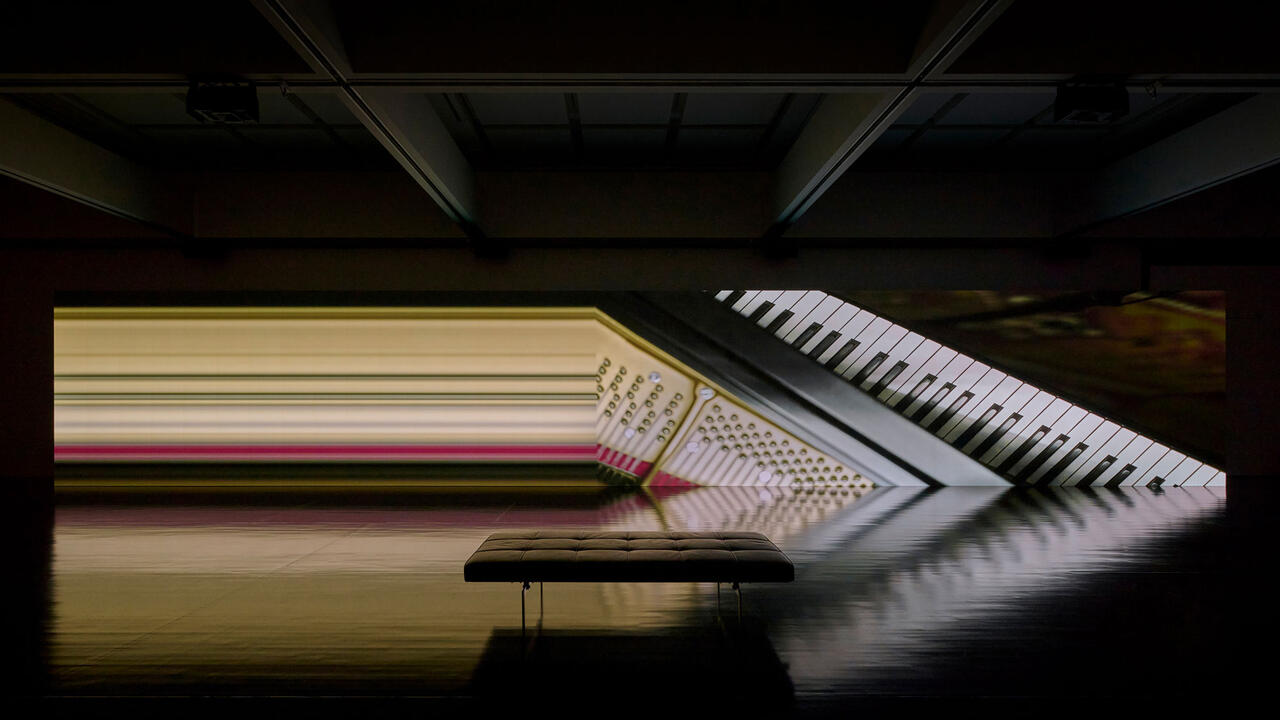Here & There
Tate Modern and African art
Tate Modern and African art

This summer, Tate Modern will, in its own words, ‘dedicate a wing of its galleries to two of the most important artists working today’: Ibrahim El-Salahi and Meschac Gaba. At 81 years of age, El-Salahi’s first major exhibition in the UK hasn’t come too soon. More than 100 of his works will be shown, including the large-scale painting Reborn Sounds of Childhood Dreams 1 (1962–3), which was recently acquired by Tate. The 50-year-old Gaba, meanwhile, has seen the work he made as a critical response to international art buyers and their consultants, Museum of Contemporary African Art (1997–2002), also bought by the institution. It will be exhibited across 12 rooms.
Let me come clean: I removed a single word from my opening sentence. Tate Modern’s press materials in fact described El-Salahi and Gaba as ‘two of the most important African artists working today’. Does the distinction matter? In her essay ‘Are you an Afropolitan?’, the museum’s curator of international art, Elvira Dyangani Ose, suggests it’s time to get rid of what she calls ‘the qualification “African”’. But the institution where she works doesn’t seem ready just yet: in the various press releases detailing Tate’s recent African acquisitions, we learn that it seeks to show ‘African artists as part of a global history of modern and contemporary art’. Similarly, Tate Modern director Chris Dercon celebrated Tate’s 2011 partnership with Nigeria’s Guaranty Trust Bank as marking ‘the beginning of being able to give African art the focus it deserves with audiences around the world’.
Writing about Documenta 11 for this magazine in 2002, Kobena Mercer noted how Okwui Enwezor’s directorship led to the exhibition being dubbed the ‘multicultural’ or ‘post-colonial Documenta’. (That same year, Enwezor wrote of its ‘spectacular difference’, whilst emphasizing that this was less about geography than politics, or what might be described as a challenge to ‘Westernism’.) Concluding his piece, Mercer pointed to ‘the awkwardly unresolved issue’ of language, observing: ‘there is still no satisfactory or widely agreed vocabulary for dealing with “difference” in contemporary culture’. Over a decade later, we still seem stuck.
Indeed, only last year, as head curator of the 2012 Paris Triennale, Enwezor continued in his endeavour to expand the space in which art engages critically with political, social and historical life. ‘I think that there is no taboo that can’t be a concern for the curator,’ he said in an interview about the show. ‘Ethnocentrism, ethnophilia, xenophobia, xenophilia: these themes reveal a paradoxical moment and my exhibition questions their junction today, by opening boundaries between disciplines.’ Yet, behind the scenes, some were less bothered about the themes than who had been picked to explore them. In relation to Africa, Enwezor was criticized for supposedly favouring so-called diaspora artists over those living and working in the continent. Indeed, even before the Paris show, he was attacked by Ghanaian artist Rikki Wemega-Kwawu for privileging ‘African artists living in the West […] above their counterparts living in Africa’.
Going back a bit further, to the Centre Pompidou’s notorious 1989 exhibition ‘Magiciens de la Terre’, curators Mark Francis and Jean-Hubert Martin sought to query the art world’s colonialist mentality, which still seemed so robust at the end of the 20th century. However flawed this effort might have been, Enwezor and Olu Oguibe, in their groundbreaking book Reading the Contemporary: African Art from Theory to the Market Place (1999), acknowledged that, for many, the show ‘was the place in which “contemporary African art” made its first real appearance in Europe’. That was nearly a quarter of a century ago, yet institutional memory being what it is, museums such as Tate – and large-scale international exhibitions like the Venice Biennale – are still talking about their engagement with contemporary and modern African art as if it were something new. So has anything actually changed?
According to Dercon, the answer is a resounding yes. ‘When I started to be interested in El-Salahi, there was no market for him,’ he explains. ‘When I started to work with Gaba – my God, 25 years ago! – there was not a market.’ Today, it couldn’t be more different. Indeed, some have accused Tate of playing it too safe by following that market, buying works with a high commercial value by Ghanaian sculptor El Anatsui, for example, or the two South Africans, David Goldblatt and William Kentridge. ‘I’m very aware of these arguments,’ says Dercon, ‘but following the oeuvres of El-Salahi and Gaba is not really following the market.’ Moreover, he says he’s been told by colleagues in the gallery and museum world that works by these two in particular ‘look way too African’ – whatever that means – and are ‘too anthropological’.
In Dercon’s view, this is no bad thing: ‘[It means] there is no canon yet. We don’t know what the canon is, nor should we.’ He explains Tate’s new engagement with artists from Africa as an attempt to ‘reinforce’ its collection. For example, the acquisitions committee came to El-Salahi through a consideration of the avant-garde movement, CoBrA, and the post-surrealists and then exploring what was being made in Africa at around the same time. ‘He is now hanging where he belongs,’ says Dercon, ‘next to Karel Appel, but also Robert Motherwell, and in front of Dorothea Tanning.’ You might think this was evidence of a shift – of El-Salahi’s work overriding his continental identity – but Dercon seems to disagree: ‘In a way, to say “African art” is a way to go to these oeuvres from the 1950s and ’60s, to Ernest Mancoba and El-Salahi, where you need to look at there, not only here.'
But the divisions between ‘there’ and ‘here’ are fuzzy. El-Salahi, for example, grew up in Sudan, but has spent large periods of his adult life in Qatar and the UK. Today, he resides mainly in Oxfordshire. Gaba, too, is from Benin but now lives in the Netherlands. Is their art still ‘African’? Or do they fit into another category, such as ‘diaspora’? Does it even matter? Yes, argues Dercon: ‘Why do we know so little? Because we used to throw it all in the bag of diaspora because, in a way, diaspora was very good for us, no? It’s like a relief, the diaspora. You know, “That’s close so we can manage …multiculturalism.” And diaspora, too, can become a form of managerialism.’ Inspired by the political scientist and public intellectual, Achille Mbembe, Dercon prefers the term ‘Afropolitanism’ because it captures ‘all these artists who work here and there and here and there […] who are much more mobile, both in spirit and in body […] We want to be part of this excitement and this energy. We want to be part of this new form of radical thinking.'
So Tate is afraid of being left behind. Is that it? Perhaps this indicates that the biggest change of all since ‘Magiciens de la Terre’ is the shifting plates of global power. Beyond the changing balance between the us and China, between West and East, the last decade has seen new patterns in the global south too, with several African states recording sustained economic growth. This year, for example, Nigeria’s economy is expected to grow by 6.5 percent while that of the UK will contract by 0.3 percent, according to the European Commission. It’s not simply that Africa is rising, as financial media like to tell us, but that Europe is also sliding. Finally, we are waking up to the fact that the West needs to keep up with ‘the rest’. Or, borrowing from Mbembe: ‘If you want to think in terms of the future, maybe it’s time to put the West to rest.’
Funnily enough, Enwezor hinted at this a decade ago in his Documenta 11 essay when he wrote that, ‘institutions such as museums and large-scale international exhibitions […] are caught up in reshaping their own legitimacy as a consequence of their delayed recognition of the complex topos of the new global community.’ Eleven years later, that recognition is, at last, being properly digested. So, far from Tate’s new relationship with ‘African art’ marking the start of something, perhaps it is really marking the end. Or, at the very least, the end of the beginning.






















